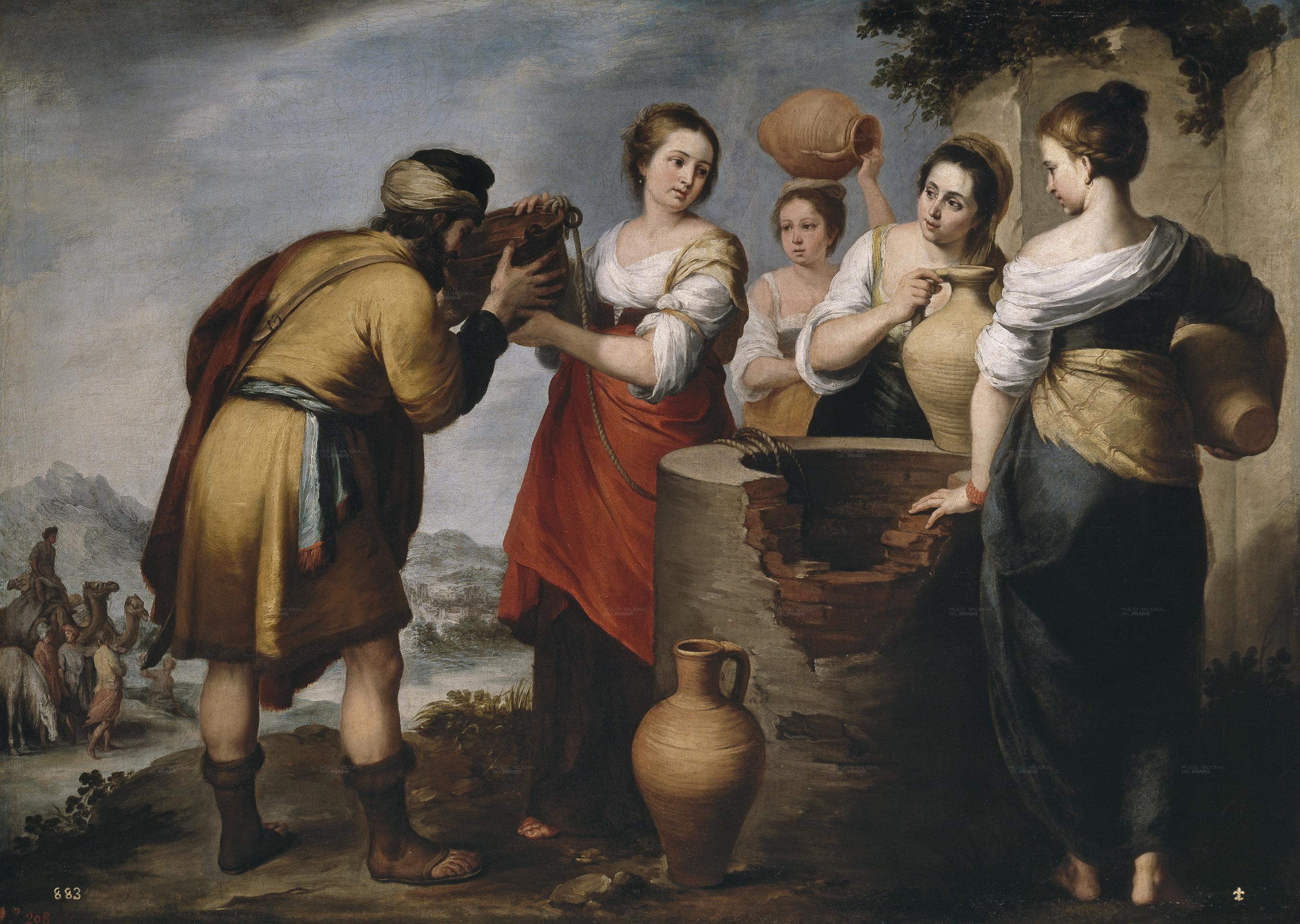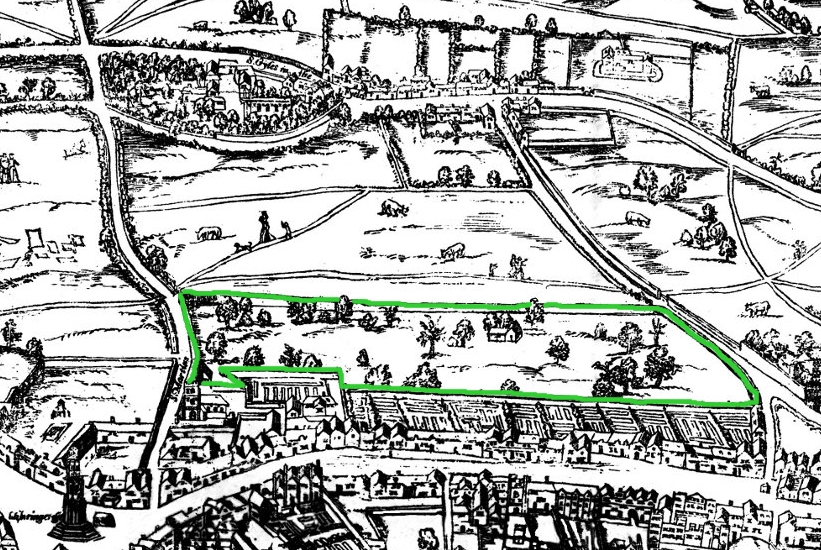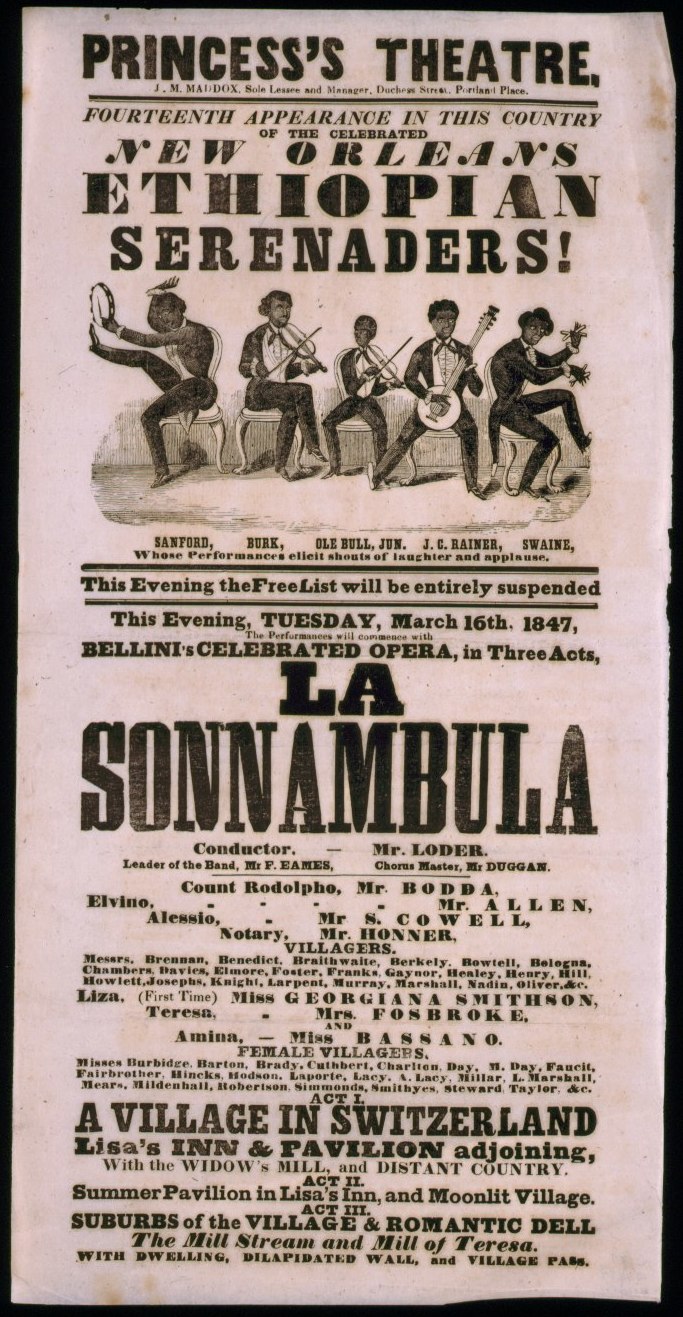|
Rebecca Isaacs
Rebecca Isaacs (26 June 1828–21 April 1877) was an operatic soprano of the mid-19th century who was the Directress of Operas at the Strand Theatre and who created the role of Leila in '' Satanella'' at the Royal Opera House in 1858. Born in London, she was the daughter of the Jewish actor and singer John Isaacs (1791-1830), who trained her for the stage. She first appeared in ''The Barn Burners'' at the City Theatre in London in 1835 and in 1836 was in the burletta ''Riquet with the Tuft'' at the Olympic Theatre. William Rubinstein, Michael A. Jolles and Hilary L. Rubinstein (editors)''The Palgrave Dictionary of Anglo-Jewish History'', Palgrave MacMillan (2011)- Google Books p456 In 1838 she played the central role of the young chimney sweep in Richard Brinsley Peake's ''The Climbing Boy: A Comic Drama''. She toured with the Distin family and sung under the name 'Miss Zuchelli' in 1838. With a voice "of great compass and sweetness", she acted at Drury Lane taking th ... [...More Info...] [...Related Items...] OR: [Wikipedia] [Google] [Baidu] |
Rebecca Isaacs Singer Portrait
Rebecca, ; Syriac: , ) from the Hebrew (lit., 'connection'), from Semitic root , 'to tie, couple or join', 'to secure', or 'to snare') () appears in the Hebrew Bible as the wife of Isaac and the mother of Jacob and Esau. According to biblical tradition, Rebecca's father was Bethuel the Aramean from Paddan Aram, also called Aram-Naharaim. Rebecca's brother was Laban the Aramean, and she was the granddaughter of Milcah and Nahor, the brother of Abraham. Rebecca and Isaac were one of the four couples that some believe are buried in the Cave of the Patriarchs, the other three being Adam and Eve, Abraham and Sarah, and Jacob and Leah. Early life After the Binding of Isaac, Sarah died. After taking care of her burial, Abraham went about finding a wife for his son Isaac, who was already 37 years old. He commanded his servant (whom the Torah commentators identify as Eliezer of Damascus) to journey to his birthplace of Aram Naharaim to select a bride from his own family, rather than ... [...More Info...] [...Related Items...] OR: [Wikipedia] [Google] [Baidu] |
Covent Garden
Covent Garden is a district in London, on the eastern fringes of the West End, between St Martin's Lane and Drury Lane. It is associated with the former fruit-and-vegetable market in the central square, now a popular shopping and tourist site, and with the Royal Opera House, itself known as "Covent Garden". The district is divided by the main thoroughfare of Long Acre, north of which is given over to independent shops centred on Neal's Yard and Seven Dials, while the south contains the central square with its street performers and most of the historical buildings, theatres and entertainment facilities, including the London Transport Museum and the Theatre Royal, Drury Lane. The area was fields until briefly settled in the 7th century when it became the heart of the Anglo-Saxon trading town of Lundenwic, then abandoned at the end of the 9th century after which it returned to fields. By 1200 part of it had been walled off by the Abbot of Westminster Abbey for use as arable ... [...More Info...] [...Related Items...] OR: [Wikipedia] [Google] [Baidu] |
1828 Births
Eighteen or 18 may refer to: * 18 (number), the natural number following 17 and preceding 19 * one of the years 18 BC, AD 18, 1918, 2018 Film, television and entertainment * ''18'' (film), a 1993 Taiwanese experimental film based on the short story ''God's Dice'' * ''Eighteen'' (film), a 2005 Canadian dramatic feature film * 18 (British Board of Film Classification), a film rating in the United Kingdom, also used in Ireland by the Irish Film Classification Office * 18 (''Dragon Ball''), a character in the ''Dragon Ball'' franchise * "Eighteen", a 2006 episode of the animated television series '' 12 oz. Mouse'' Music Albums * ''18'' (Moby album), 2002 * ''18'' (Nana Kitade album), 2005 * '' 18...'', 2009 debut album by G.E.M. Songs * "18" (5 Seconds of Summer song), from their 2014 eponymous debut album * "18" (One Direction song), from their 2014 studio album ''Four'' * "18", by Anarbor from their 2013 studio album ''Burnout'' * "I'm Eighteen", by Alice Cooper commo ... [...More Info...] [...Related Items...] OR: [Wikipedia] [Google] [Baidu] |
National Portrait Gallery, London
The National Portrait Gallery (NPG) is an art gallery in London housing a collection of portraits of historically important and famous British people. It was arguably the first national public gallery dedicated to portraits in the world when it opened in 1856. The gallery moved in 1896 to its current site at St Martin's Place, off Trafalgar Square, and adjoining the National Gallery (London), National Gallery. It has been expanded twice since then. The National Portrait Gallery also has regional outposts at Beningbrough Hall in Yorkshire and Montacute House in Somerset. It is unconnected to the Scottish National Portrait Gallery in Edinburgh, with which its remit overlaps. The gallery is a non-departmental public body sponsored by the Department for Digital, Culture, Media and Sport. Collection The gallery houses portraits of historically important and famous British people, selected on the basis of the significance of the sitter, not that of the artist. The collection includes ... [...More Info...] [...Related Items...] OR: [Wikipedia] [Google] [Baidu] |
Brookwood Cemetery
Brookwood Cemetery, also known as the London Necropolis, is a burial ground in Brookwood, Surrey, England. It is the largest cemetery in the United Kingdom and one of the largest in Europe. The cemetery is listed a Grade I site in the Register of Historic Parks and Gardens. History Background Brookwood Cemetery was conceived by the London Necropolis Company (LNC) in 1849 to house London's deceased, at a time when the capital was finding it difficult to accommodate its increasing population, of living and dead. The cemetery is said to have been landscaped by architect William Tite, but this is disputed. In 1854, Brookwood was the largest cemetery in the world but it is no longer. Its initial owner being incorporated by Act of Parliament in 1852, Brookwood Cemetery (apart from its northern section, reserved for Nonconformists) was consecrated by Charles Sumner, Bishop of Winchester, on 7 November 1854. It was opened to the public on 13 November 1854 when the first buria ... [...More Info...] [...Related Items...] OR: [Wikipedia] [Google] [Baidu] |
Princess's Theatre, London
The Princess's Theatre or Princess Theatre was a theatre in Oxford Street, London. The building opened in 1828 as the "Queen's Bazaar" and housed a diorama by Clarkson Stanfield and David Roberts. It was converted into a theatre and opened in 1836 as the Princess's Theatre, named for then Princess Victoria before her accession as queen. After an unsuccessful series of promenade concerts, alterations were made on the interior, and the theatre was reopened on 26 December 1842 with Vincenzo Bellini's opera '' La sonnambula''. The theatre, by now under the management of John Medex Maddox, presented operas and other entertainments, such as General Tom Thumb. The theatre is best remembered for Charles Kean's Shakespeare revivals, beginning in 1849 and continuing for ten years. Kean presented these in lavish and well-researched "authentic" productions and also presented French drama. Dion Boucicault became the theatre's leading actor, and Ellen Terry and Henry Irving got t ... [...More Info...] [...Related Items...] OR: [Wikipedia] [Google] [Baidu] |
Jewish Encyclopedia
''The Jewish Encyclopedia: A Descriptive Record of the History, Religion, Literature, and Customs of the Jewish People from the Earliest Times to the Present Day'' is an English-language encyclopedia containing over 15,000 articles on the history, culture, and state of Judaism up to the early 20th century. The encyclopedia's managing editor was Isidore Singer and the editorial board was chaired by Isaac K. Funk and Frank H. Vizetelly. The work's scholarship is still highly regarded. The American Jewish Archives deemed it "the most monumental Jewish scientific work of modern times", and Rabbi Joshua L. Segal said "for events prior to 1900, it is considered to offer a level of scholarship superior to either of the more recent Jewish encyclopedias written in English." It was originally published in 12 volumes between 1901 and 1906 by Funk & Wagnalls of New York, and reprinted in the 1960s by KTAV Publishing House. It is now in the public domain. History Conc ... [...More Info...] [...Related Items...] OR: [Wikipedia] [Google] [Baidu] |
Sims Reeves
John Sims Reeves (21 October 1821 – 25 October 1900) was an English operatic, oratorio and ballad tenor vocalist during the mid-Victorian era. Reeves began his singing career in 1838 but continued his vocal studies until 1847. He soon established himself on the opera and concert stage and became known for his interpretation of ballads. He continued singing through the 1880s and later taught and wrote about singing. Musical beginnings Sims Reeves was born in Shooter's Hill, in Kent, England. His parents were John Reeves, a musician of Yorkshire origin, and his wife, Rosina. He received his earliest musical education from his father, a bass soloist in the Royal Artillery Band, and probably through the bandmaster, George McKenzie. By the age of fourteen he was appointed choirmaster of North Cray church and performed organist's duties. He seems to have studied medicine for a year but changed his mind when he gained his adult voice: it was at first a baritone, training unde ... [...More Info...] [...Related Items...] OR: [Wikipedia] [Google] [Baidu] |
Lucia Di Lammermoor
''Lucia di Lammermoor'' () is a (tragic opera) in three acts by Italian composer Gaetano Donizetti. Salvadore Cammarano wrote the Italian-language libretto loosely based upon Sir Walter Scott's 1819 historical novel '' The Bride of Lammermoor''. Donizetti wrote ''Lucia di Lammermoor'' in 1835, when he was reaching the peak of his reputation as an opera composer. Gioachino Rossini had recently retired and Vincenzo Bellini had died shortly before the premiere of ''Lucia'' leaving Donizetti as "the sole reigning genius of Italian opera".Mackerras, p. 29 Not only were conditions ripe for Donizetti's success as a composer, but there was also a widespread interest in the history and culture of Scotland. The perceived romance of its violent wars and feuds, as well as its folklore and mythology, intrigued 19th century readers and audiences. Sir Walter Scott dramatized these elements in his novel ''The Bride of Lammermoor'', which inspired several musical works including ''Lucia''.Macker ... [...More Info...] [...Related Items...] OR: [Wikipedia] [Google] [Baidu] |
La Fille Du Régiment
' (''The Daughter of the Regiment'') is an opéra comique in two acts by Gaetano Donizetti, set to a French libretto by Jules-Henri Vernoy de Saint-Georges and Jean-François Bayard. It was first performed on 11 February 1840 by the Paris Opéra-Comique at the Salle de la Bourse. The opera was written by Donizetti while he was living in Paris between 1838 and 1840 preparing a revised version of his then-unperformed Italian opera, ''Poliuto'', as ''Les martyrs'' for the Paris Opéra. Since ''Martyrs'' was delayed, the composer had time to write the music for ''La fille du régiment'', his first opera set to a French text, as well as to stage the French version of ''Lucia di Lammermoor'' as ''Lucie de Lammermoor''. ''La fille du régiment'' quickly became a popular success partly because of the famous aria "''Ah! mes amis, quel jour de fête!''", which requires the tenor to sing no fewer than eight high Cs – a frequently sung ninth is not written. ', a slightly different It ... [...More Info...] [...Related Items...] OR: [Wikipedia] [Google] [Baidu] |
Gioachino Rossini
Gioachino Antonio Rossini (29 February 1792 – 13 November 1868) was an Italian composer who gained fame for his 39 operas, although he also wrote many songs, some chamber music and piano pieces, and some sacred music. He set new standards for both comic and serious opera before retiring from large-scale composition while still in his thirties, at the height of his popularity. Born in Pesaro to parents who were both musicians (his father a trumpeter, his mother a singer), Rossini began to compose by the age of 12 and was educated at music school in Bologna. His first opera was performed in Venice in 1810 when he was 18 years old. In 1815 he was engaged to write operas and manage theatres in Naples. In the period 1810–1823 he wrote 34 operas for the Italian stage that were performed in Venice, Milan, Ferrara, Naples and elsewhere; this productivity necessitated an almost formulaic approach for some components (such as overtures) and a certain amount of self-borrowing. During ... [...More Info...] [...Related Items...] OR: [Wikipedia] [Google] [Baidu] |
La Cenerentola
' (''Cinderella, or Goodness Triumphant'') is an operatic '' dramma giocoso'' in two acts by Gioachino Rossini. The libretto was written by Jacopo Ferretti, based on the libretti written by Charles-Guillaume Étienne for the opera ''Cendrillon'' with music by Nicolas Isouard (first performed Paris, 1810) and by Francesco Fiorini for ' with music by Stefano Pavesi (first performed Milan, 1814). All these operas are versions of the fairy tale ''Cendrillon'' by Charles Perrault. Rossini's opera was first performed in Rome's Teatro Valle on 25 January 1817. Rossini composed ''La Cenerentola'' when he was 25 years old, following the success of '' The Barber of Seville'' the year before. ''La Cenerentola'', which he completed in a period of three weeks, is considered to have some of his finest writing for solo voice and ensembles. Rossini saved some time by reusing an overture from ''La gazzetta'' and part of an aria from ''The Barber of Seville'' and by enlisting a collaborator ... [...More Info...] [...Related Items...] OR: [Wikipedia] [Google] [Baidu] |






.jpg)
_Sims_Reeves_by_Alessandro_Ossani.jpg)


